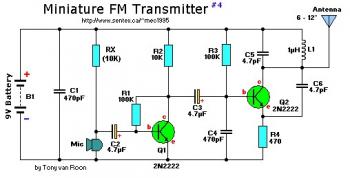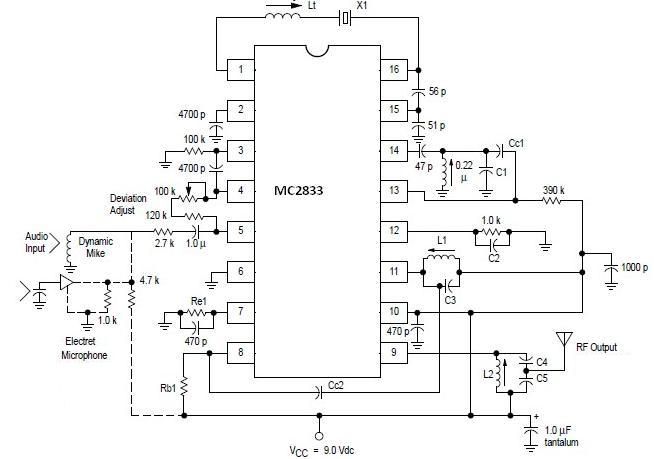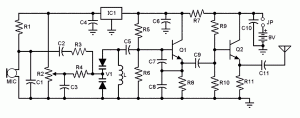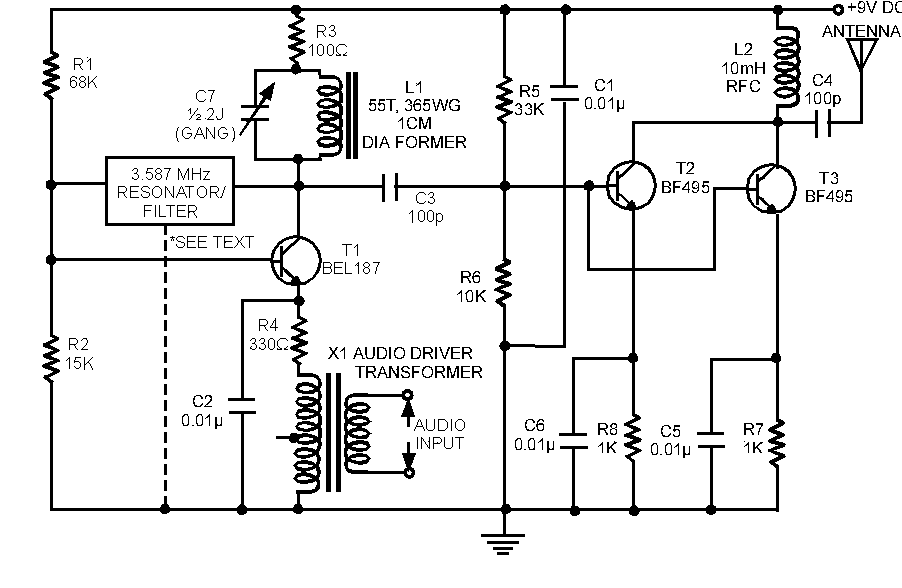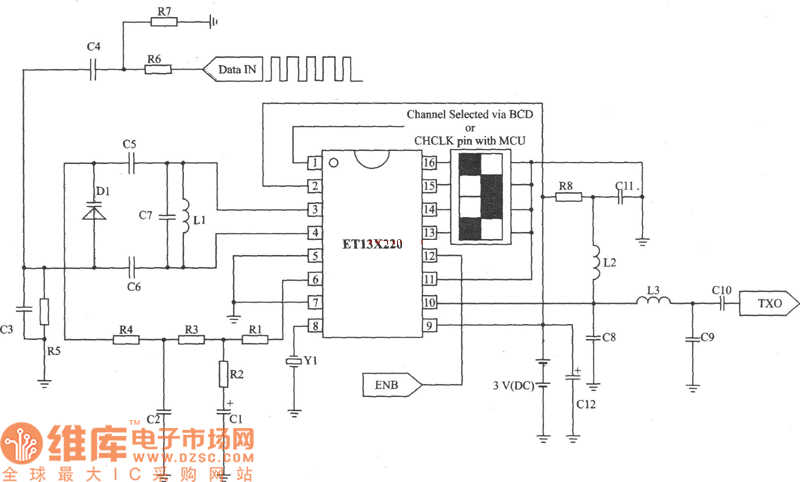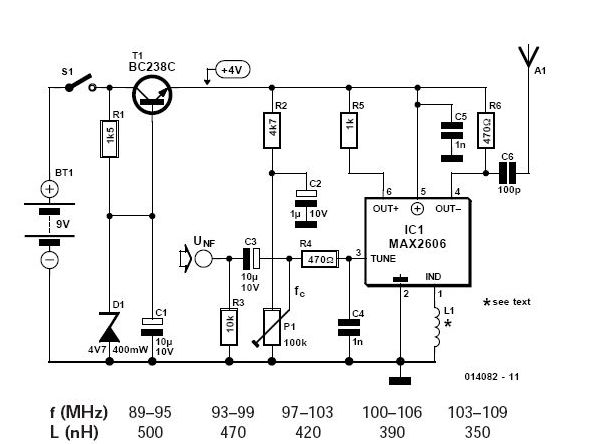
FM Transmitter Bugs
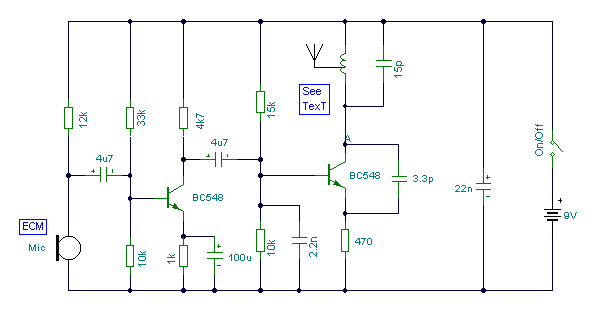
This compact transmitter employs a Hartley-type oscillator. Typically, the capacitor in the tank circuit would connect to the base of the transistor; however, at VHF frequencies, the base-emitter capacitance of the transistor behaves like a short circuit, effectively maintaining this connection. The coil consists of four turns of 18 SWG wire wound around a quarter-inch former. The aerial tap is positioned approximately one and a half turns from the supply end. Audio sensitivity is notably high when utilized with an ECM-type microphone insert.
The described transmitter circuit is based on the principles of a Hartley oscillator, which is characterized by its use of an LC (inductor-capacitor) tank circuit to generate oscillations. In this configuration, the inductor is formed by a coil of wire, while the capacitive component is realized through a capacitor connected to the base of the transistor. The choice of a Hartley oscillator is particularly advantageous for VHF applications due to its ability to produce a stable frequency output.
In the construction of the coil, the use of 18 SWG wire ensures a balance between resistance and inductance, allowing for efficient energy transfer within the circuit. The quarter-inch former provides a sturdy structure for the coil, enabling precise winding and consistent inductance characteristics. The placement of the aerial tap is critical for optimizing the transmitter's performance; by locating it one and a half turns from the supply end, the circuit can achieve a desirable impedance match, enhancing signal transmission.
The high audio sensitivity of the transmitter is attributed to its compatibility with ECM (Electret Condenser Microphone) type microphone inserts. These microphones are known for their low self-noise and high output levels, making them ideal for applications requiring clear audio capture. The integration of such a microphone into the circuit allows for effective modulation of the transmitted signal, ensuring that audio signals are faithfully reproduced at the output.
Overall, this transmitter design exemplifies a practical approach to VHF transmission, leveraging the characteristics of the Hartley oscillator and the properties of the components used to achieve reliable performance in audio applications.This small transmitter uses a hartley type oscillator. Normally the capacitor in the tank circuit would connect at the base of the transistor, but at VHF the base emitter capacitance of the transistor acts as a short circuit, so in effect, it still is. The coil is four turns of 18swg wire wound around a quarter inch former. The aerial tap is about one and a half turns from the supply end. Audio sensitivity is very good when used with an ECM type microphone insert 🔗 External reference
The described transmitter circuit is based on the principles of a Hartley oscillator, which is characterized by its use of an LC (inductor-capacitor) tank circuit to generate oscillations. In this configuration, the inductor is formed by a coil of wire, while the capacitive component is realized through a capacitor connected to the base of the transistor. The choice of a Hartley oscillator is particularly advantageous for VHF applications due to its ability to produce a stable frequency output.
In the construction of the coil, the use of 18 SWG wire ensures a balance between resistance and inductance, allowing for efficient energy transfer within the circuit. The quarter-inch former provides a sturdy structure for the coil, enabling precise winding and consistent inductance characteristics. The placement of the aerial tap is critical for optimizing the transmitter's performance; by locating it one and a half turns from the supply end, the circuit can achieve a desirable impedance match, enhancing signal transmission.
The high audio sensitivity of the transmitter is attributed to its compatibility with ECM (Electret Condenser Microphone) type microphone inserts. These microphones are known for their low self-noise and high output levels, making them ideal for applications requiring clear audio capture. The integration of such a microphone into the circuit allows for effective modulation of the transmitted signal, ensuring that audio signals are faithfully reproduced at the output.
Overall, this transmitter design exemplifies a practical approach to VHF transmission, leveraging the characteristics of the Hartley oscillator and the properties of the components used to achieve reliable performance in audio applications.This small transmitter uses a hartley type oscillator. Normally the capacitor in the tank circuit would connect at the base of the transistor, but at VHF the base emitter capacitance of the transistor acts as a short circuit, so in effect, it still is. The coil is four turns of 18swg wire wound around a quarter inch former. The aerial tap is about one and a half turns from the supply end. Audio sensitivity is very good when used with an ECM type microphone insert 🔗 External reference
